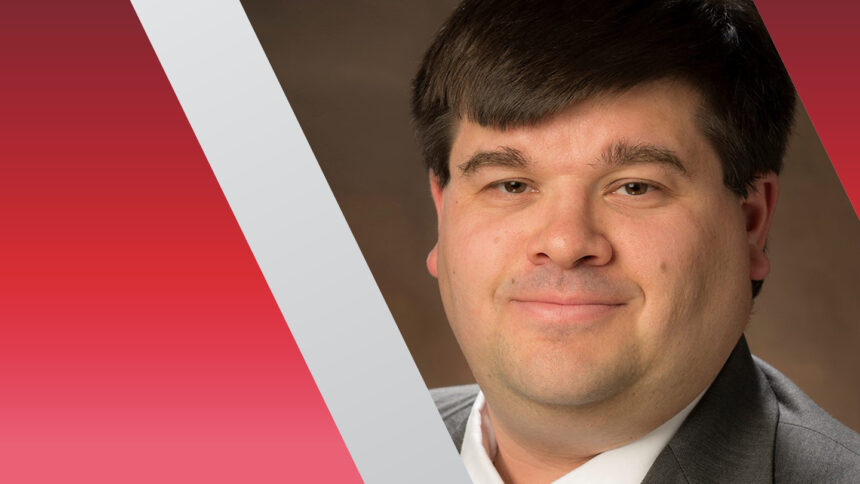
Two preeminent skilled nursing researchers are calling for significant changes to a proposed federal staffing mandate that would build on “the rule’s strengths while addressing shortcomings and minimizing unintended consequences.”
In the short term, Harvard healthcare policy expert David Grabowski, PhD, and Scripps Gerontology Center Fellow John Bowblis (pictured), PhD, urged the Centers for Medicare & Medicaid Services to use a total nurse-hour measure to ensure that licensed practical nurses remain a core component of daily nursing home care.
In the long-term, the researchers encouraged CMS to shorten its implementation window and take a harder look at system-level challenges in paying for nursing home care.
“Addressing the staffing problem is just one piece of a bigger puzzle. The entire system needs to be transformed, which will require payment reform and financial transparency,” they wrote in a perspective piece published in the New England Journal of Medicine over the weekend. “The federal minimum-staffing standards are long overdue, but until the broader payment and accountability issues are addressed, not all nursing homes will consistently deliver high-quality, person-centered, equitable care.”
Since being proposed Sept. 1, the rule has been assaulted from all sides, with skilled nursing operators decrying the timing and the scope of the requirements as the sector faces historic labor challenges. Patient advocates, meanwhile, have besieged CMS with demands to do more, citing previous research that called for 4.1 hours of direct care per patient, per day.
And federal lawmakers are increasingly calling on CMS to rethink its plans.
On Tuesday, several House and Senate leaders asked Health and Human Services Secretary Xavier Becerra and CMS Administrator Chiquita Brooks-LaSure “to immediately withdraw the proposed rule and provide justification for its $40.6 billion unfunded mandate that could force many nursing homes to close, threatening resident access to direct care services.”
If the agency does move forward with its proposal, Grabowski and Bowblis want the final version to be implemented sooner than the called-for three to five years; limit waivers; and address hourly coverage and nursing type.
The pair did not specify what an ideal minimum threshold for total daily care should be, noting that their research shows just 43% of nursing homes could meet a total of 3.48 hours a day. They acknowledged that many consumer advocates want a higher total.
Waiver warnings
But Grabowski and Bowblis are among many who fear that the proposed rule, which established required hours only for certified nursing assistants and registered nurses, would encourage providers to limit their use of LPNs.
In the first quarter or this year, the researchers reported, the average US nursing home staffed LPNs at a level of 0.89 hours per resident day and RNs as a level of 1.15 hours per patient day.
“The hope is that with the new rules, nursing homes will increase their use of RNs while continuing to employ LPNs at their current level, but the more likely result will be the substitution of CNAs in place of LPNs,” the researchers warned. “This type of substitution has happened under state minimum-staffing standards, as has a reduced use of ancillary service staff (e.g. housekeeping), who are not included in these policies.”
They said any standard must be “broad in order to minimize potential unintended consequences.”
Grabowski and Bowblis also took issue with the planned use of waivers for providers facing hiring hardships. Granting waivers for facilities in areas that have hiring difficulties would allow “insufficient” staffing to continue, they argued.
“While some nursing homes are eligible for staffing waivers, the waiver criteria is narrow and many nursing homes are not eligible,” Bowblis added in an email to McKnight’s Long-Term Care News Tuesday. “Without addressing broader reform, including payment reform and developing a strong long-term care workforce, the proposal as written can lead to a number of nursing home closures, especially in states where staffing levels are lower and Medicaid payment rates already do not cover the cost of care.”
Instead of waivers, Bowblis and Grabowski said federal regulators should focus on payment reform. CMS, they wrote, could increase payments and require a share be spent on higher wages or revise federal rules for Medicaid payment systems to support a mandate.
“The ‘high’ Medicaid nursing homes do not have funds from other payment sources, such as Medicare or donations (among not-for-profits) which can be used to hire this staff,” Bowblis told McKnight’s. “As a result, Medicaid would need to increase payment rates, but these payment rates are determined at the state level. Without buy-in from states or broader payment reform from Congress, the proposal is an unfunded mandate that is not economically feasible.”




